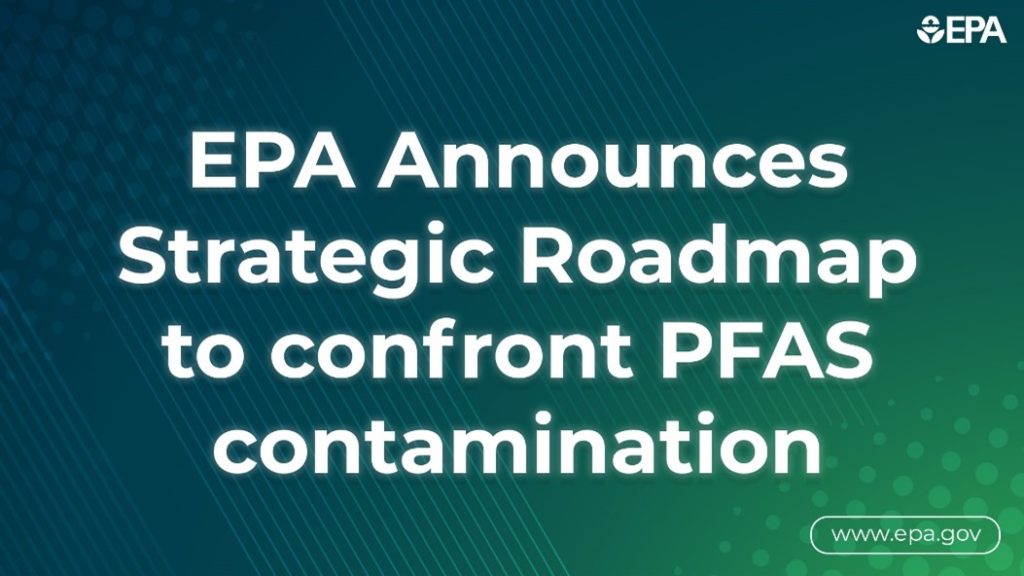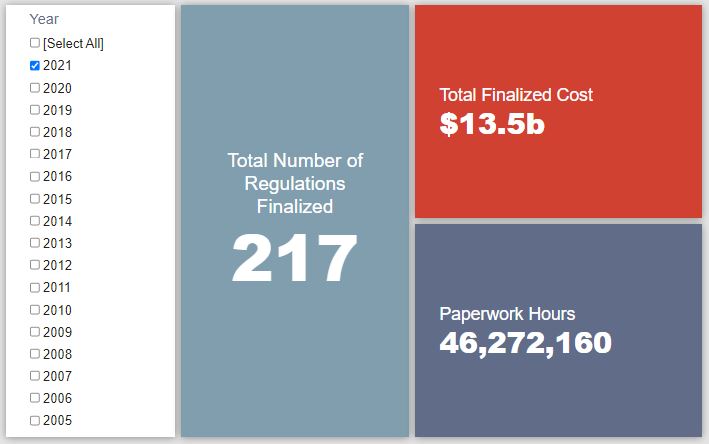Week in Regulation
October 25, 2021
EPA Drives the Week
While it wasn’t the most thrilling of weeks in terms of regulatory impact, last week did have a notable trend in terms of the main agency involved: the Environmental Protection Agency (EPA). In what was an acronym-heavy week, a (cost-cutting) proposed rule regarding polychlorinated biphenyls (PCBs) and a “strategic roadmap” for the regulation per- and poly-fluoroalkyl substances (PFAS) were the big-ticket items. Across all rulemakings, agencies published $180.7 million in total net cost savings but added 69,576 annual paperwork burden hours.
REGULATORY TOPLINES
- Proposed Rules: 36
- Final Rules: 53
- 2021 Total Pages: 58,667
- 2021 Final Rule Costs: $13.5 billion
- 2021 Proposed Rule Costs: $185.9 billion
NOTABLE REGULATORY ACTIONS
In terms of the quantifiable impact, the most significant rulemaking of the week was EPA’s proposed rule regarding “Alternate PCB Extraction Methods and Amendments to PCB Cleanup and Disposal Regulations.” As EPA notes, “PCBs are a group of man-made organic chemicals known as chlorinated hydrocarbons,” that were banned in 1979 due to the health risks of human exposure, but are durable enough to continue to reside in a variety of products since then. The agency expects the proposal “to ease regulatory burden and costs on the regulated community and on EPA by providing greater flexibility while maintaining environmental protectiveness in the allowable extraction and determinative methods used to characterize and verify the cleanup of PCB waste.” According to the rulemaking’s , these savings could be roughly $191 million in present value, or $14.3 million on an annualized basis.
TRACKING THE ADMINISTRATIONS
As we have already seen from executive orders and memos, the Biden Administration will surely provide plenty of contrasts with the Trump Administration on the regulatory front. And while there is a general expectation that the new administration will seek to broadly restore Obama-esque regulatory actions, there will also be areas where it charts its own course. Since the AAF RegRodeo data extend back to 2005, it is possible to provide weekly updates on how the top-level trends of President Biden’s regulatory record track with those of his two most recent predecessors. The following table provides the cumulative totals of final rules containing some quantified economic impact from each administration through this point in their respective terms.
![]()
This was yet another instance of only nominal shifts in the Biden Administration’s final rule totals. In fact, across the three covered administrations, there was only modest change. The most notable spike came from the Trump Administration’s paperwork total, which increased by approximately half-a-million hours. An October 2017 Federal Communications Commission rule regarding “Structure and Practices of the Video Relay Services Program” provided the bulk of that with roughly 486,000 new annual hours of paperwork.
THIS WEEK’S REGULATORY PICTURE
This week, the EPA lays out its plan for regulating “forever chemicals.”

Via @EPA Twitter
On October 18, EPA released its Strategic Roadmap for regulating PFAS. The man-made chemicals, which are found in many waterproof products and non-stick cookware, have been linked to health problems, including cancer. There have also been high-profile instances of the chemicals contaminating water supplies in areas where they are manufactured or highly used.
The plan explains how EPA intends to increase its understanding of the effects of PFAS and use existing authority to regulate PFAS throughout the entire life cycle of the chemicals. Among the specific regulatory actions discussed in the plan, EPA aims to issue new regulations requiring additional reporting of the use of PFAS in 2022, which the agency expects will help provide more information on sources and quantities of the chemicals.
EPA will also set limits on discharges into water by the end of 2022 and work on setting a national drinking water standard for two specific types of PFAS by the end of 2023. While those actions pertain to water contamination, the agency will also issue regulatory actions on land contamination. EPA aims to designate certain PFAS as hazardous substances under its Superfund program with a final rule by the end of 2023. EPA will also issue an advanced notice of proposed rulemaking in 2022 for public input on whether other PFAS not included in that rulemaking should be brought under Superfund.
EPA issued the plan in response to pressure from Congress about the need to regulate PFAS. While the Trump Administration has issued a plan of its own, that plan drew criticism from both Democrats and Republicans for its limitation.
For now, the plan appears to be something of a win for industry, which was concerned that EPA would issue blanket regulations on all PFAS rather than separate them into subgroups based on their various chemical structures. EPA currently seems reluctant to classify all PFAS together but may seek to do so depending on the public’s input during the upcoming rulemakings.
TOTAL BURDENS
Since January 1, the federal government has published $199.5 billion in total net costs (with $13.5 billion in new costs from finalized rules) and 52.6 million hours of net annual paperwork burden increases (with 46.3 million hours in increases from final rules).












